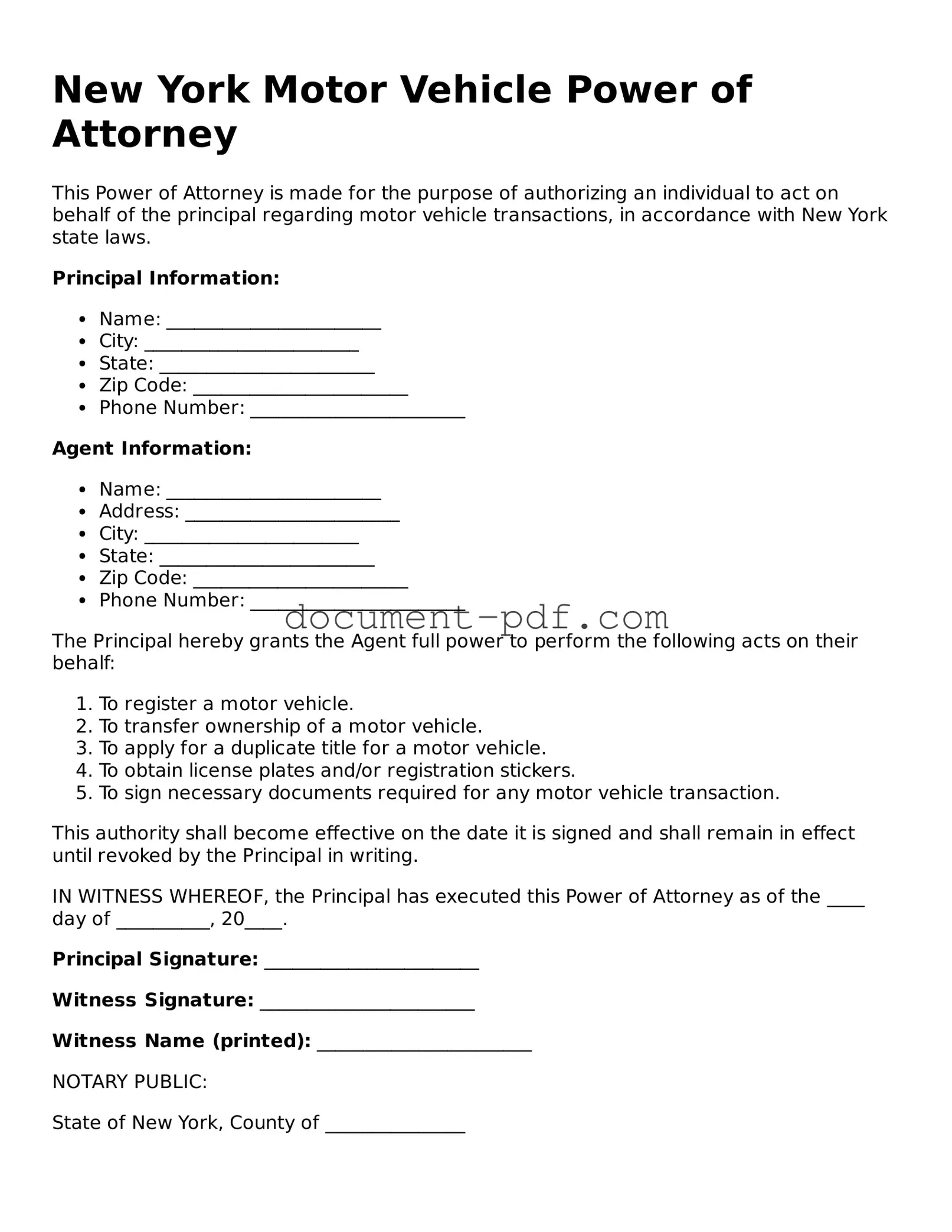New York Motor Vehicle Power of Attorney
This Power of Attorney is made for the purpose of authorizing an individual to act on behalf of the principal regarding motor vehicle transactions, in accordance with New York state laws.
Principal Information:
- Name: _______________________
- City: _______________________
- State: _______________________
- Zip Code: _______________________
- Phone Number: _______________________
Agent Information:
- Name: _______________________
- Address: _______________________
- City: _______________________
- State: _______________________
- Zip Code: _______________________
- Phone Number: _______________________
The Principal hereby grants the Agent full power to perform the following acts on their behalf:
- To register a motor vehicle.
- To transfer ownership of a motor vehicle.
- To apply for a duplicate title for a motor vehicle.
- To obtain license plates and/or registration stickers.
- To sign necessary documents required for any motor vehicle transaction.
This authority shall become effective on the date it is signed and shall remain in effect until revoked by the Principal in writing.
IN WITNESS WHEREOF, the Principal has executed this Power of Attorney as of the ____ day of __________, 20____.
Principal Signature: _______________________
Witness Signature: _______________________
Witness Name (printed): _______________________
NOTARY PUBLIC:
State of New York, County of _______________
On this ____ day of __________, 20____, before me, a notary public, personally appeared _____________________, known to me to be the person whose name is subscribed to this instrument and acknowledged that they executed the same for the purposes therein contained.
Notary Public Signature: _______________________
My Commission Expires: _______________________
